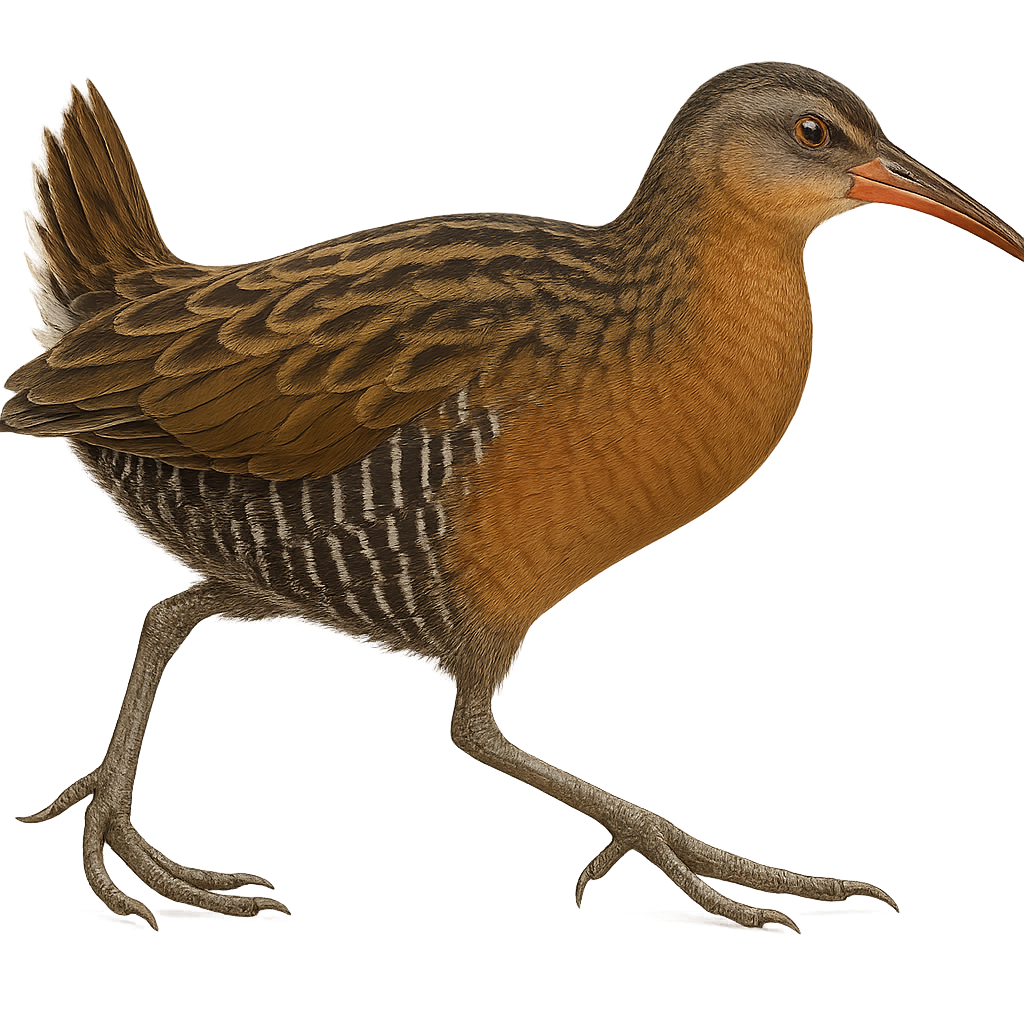Your wildlife photography guide.
Explore the king rail in detail, study its behavior, prepare your shots.
Where to observe and photograph the king rail in the wild
Learn where and when to spot the king rail in the wild, how to identify the species based on distinctive features, and what natural environments it inhabits. The WildlifePhotographer app offers tailored photography tips that reflect the king rail’s behavior, helping you capture better wildlife images. Explore the full species profile for key information including description, habitat, active periods, and approach techniques.
King Rail
Scientific name: Rallus elegans

IUCN Status: Near Threatened
Family: RALLIDAE
Group: Birds
Sensitivity to human approach: Shy
Minimum approach distance: 10 m
Courtship display: April to June
Incubation: 20-23 jours
Hatchings: May to July
Habitat:
Marshes, wetlands, flooded meadows
Activity period :
Active at dawn and dusk, ideal moments for observation.
Identification and description:
The King Rail, Rallus elegans, is a medium-sized waterbird belonging to the Rallidae family. It is characterized by its reddish-brown plumage, black and white barred flanks, and slightly curved long bill. Mainly found in the freshwater marshes of North America, it is often difficult to spot due to its secretive behavior and dense habitat. This bird is an excellent swimmer and primarily feeds on aquatic insects, crustaceans, and small fish. Although its call is powerful and distinctive, it is rarely heard outside the breeding season. Habitat conservation is crucial for its survival, as it is vulnerable to wetland destruction.
Recommended lens:
400mm – adjust based on distance, desired framing (portrait or habitat), and approach conditions.
Photography tips:
To photograph the King Rail, it is advisable to use a telephoto lens of at least 400mm to capture detailed images from a distance. Marshes and wetlands are the best places to observe it, especially at dusk. Stay discreet and avoid sudden movements to prevent scaring it away. Use a tripod to stabilize your camera and aim for the golden hours for soft, natural light. Be patient, as this bird is shy and may remain hidden in dense vegetation.
The WildlifePhotographer App is coming soon!
Be the first to explore the best nature spots, track rutting seasons, log your observations, and observe more wildlife.
Already 1 432 wildlife lovers subscribed worldwide

